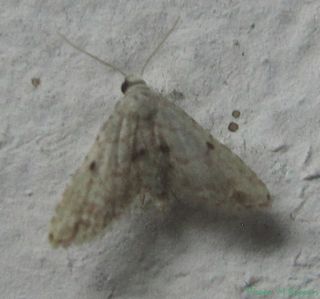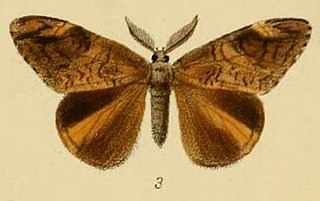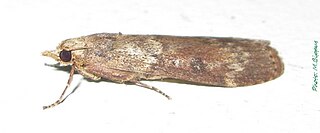Sir George Francis Hampson, 10th Baronet was an English entomologist.

Nudaria is a genus of moths in the subfamily Arctiinae erected by Adrian Hardy Haworth in 1809.
Balaenifrons is a genus of moths of the family Crambidae.
Eschata is a genus of moths of the family Crambidae.

Araeopteron is a genus of moths of the family Erebidae. The genus was erected by George Hampson in 1893.

Mimeusemia is a genus of moths of the family Noctuidae first described by Arthur Gardiner Butler in 1875. Species are found in Japan, India, Sri Lanka and Myanmar.

Aroa is a genus of moths in the subfamily Lymantriinae first described by Francis Walker in 1855. Species are distributed in South Africa, China, throughout India, Sri Lanka, Myanmar, and Java.

Hemithea is a genus of moths in the family Geometridae erected by Philogène Auguste Joseph Duponchel in 1829. In 1999 there were about 31 species in the genus.

Organopoda is a genus of moths in the family Geometridae first described by George Hampson in 1893.

Lamoria is a genus of small moths belonging to the family Pyralidae.
Diloxia is a genus of snout moths. It was described by George Hampson in 1896, and is known from Madagascar and India.
Diloxia fimbriata is a species of snout moth in the genus Diloxia. It was described by George Hampson in 1896. It is found in India.
Doloessa is a genus of snout moths. It was described by Philipp Christoph Zeller in 1848 and is known from India, Australia, New Guinea, Japan, Sri Lanka, Indonesia, and China.

Epiplema is a genus of moths in the family Uraniidae described by Gottlieb August Wilhelm Herrich-Schäffer in 1855. A number of species have been reassigned to Europlema.
Lamoria adaptella, the plain lamoria, is a species of snout moth in the genus Lamoria. It was described by Francis Walker in 1863 and is known from South Africa, the Gambia, Kenya, Mozambique, India, Sri Lanka, Indonesia and Singapore, as well as Japan and Taiwan.
Diathraustodes leucotrigona is a moth in the family Crambidae. It was described by George Hampson in 1896. It is found in the Nilgiri Mountains of India and Silhouette Island in the Seychelles.
Pediasia ochristrigella is a moth in the family Crambidae. It was described by George Hampson in 1896. It is found in the Punjab of what was British India, western Pakistan, Tunisia and Sri Lanka.

Agrotera leucostola is a moth in the family Crambidae. It was described by George Hampson in 1896. It is found in Taiwan and in the Indian states of Sikkim and Assam.
Auchmophoba costastrigalis is a moth in the family Crambidae. It was described by George Hampson in 1896. It is found in Sri Lanka.
Araeopteron fasciale is a species of moth of the family Erebidae first described by George Hampson in 1896. It is known from Sri Lanka.








